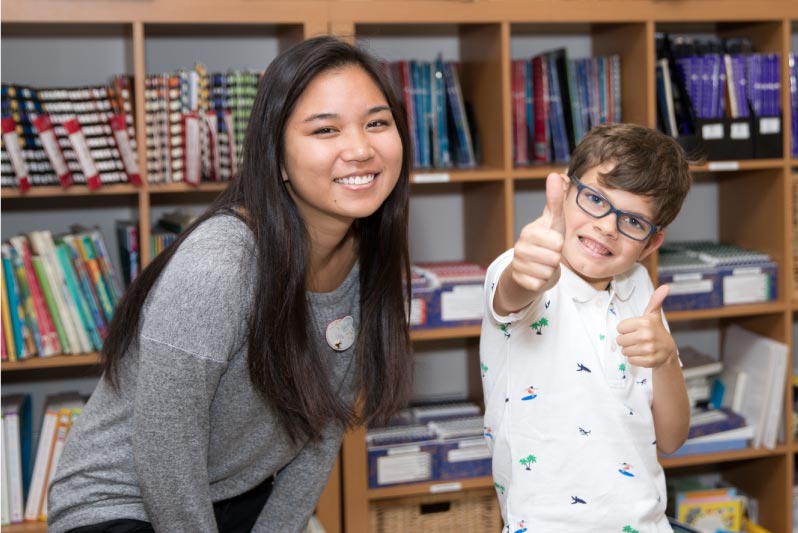
While a science experiment involving a baking soda and vinegar volcano may be fun and exciting for most students, it can be torture for those who have trouble reading the directions or following the procedural steps independently.
Ideally, a typical school day is filled with tons of opportunities to explore, learn, and grow for students who have the necessary skills to perform at grade level — but for those who struggle to keep up with their peers, each day can present challenges that can lead to frustration, behavioral issues, and eventually lowered self-esteem.
Why is he struggling?
Students who are ready to learn are global, independent readers and thinkers. Reading is an integration of processing skills: word attack, sight word recognition, contextual fluency, oral vocabulary, and comprehension. Students who are poor decoders and spellers, or slow readers, may have weak symbol imagery—the ability to visualize letters in words. Students with poor comprehension, critical thinking, writing and memory may have weak concept imagery—the ability to create an imagined gestalt (whole) from language. These difficulties are not only frustrating for a student, but prevent them from accessing school curriculum.
What Can Be Done? Help from your local Learning Center.
We believe that all students can be taught to read and comprehend to their potential. Our unique, research-validated instruction help students develop the imagery-language foundation necessary to read and comprehend content in the classroom. Traditional tutoring programs may work on homework once a week over the course of several semesters or even years. Because of this, our typical recommendations for daily instruction to change learning may be a new concept. We work with our students in a variety of ways — in person or online and before, after or during the school day — so that we’re able to meet the needs of each child and family.
Why daily? Nanci Bell provides reasoning for daily intensive instruction in the following excerpt from Visualizing and Verbalizing for Language Comprehension and Thinking:
“The rate of learning gain can be improved with intensive intervention. Students with severe weakness in concept imagery may be years behind in language comprehension. For example, Johnny, a student in the fifth grade with reading comprehension at the second-grade level, has a three-year gap between his grade level and his reading comprehension. Even with adequate oral vocabulary and decoding skills, Johnny didn’t gain a year in reading comprehension for each year in school…intervention has to decrease the learning gap by increasing the rate of learning. To increase the rate of learning, you need to provide the right diagnosis and the right instruction, in the right environment. The last is often intensive intervention, four hours a day, five days a week, which results in years of gain in weeks of instruction.”
Watch a father and mother discuss the instruction their adopted twin sons received at a Lindamood-Bell Learning Center:
A School Like No Other
In addition to offering individualized learning programs in each of our Learning Centers, we also have a unique private school that combines Lindamood-Bell instructional expertise with a full curriculum: The Lindamood-Bell Academy. We develop the imagery-language foundation for language and literacy skill and apply those skills to all curriculum and content. The Academy allows students who have struggled in a traditional school setting to be successful. Students can do a four or six hour school day either in person, online or both. To learn more about our proven, standards-aligned Academy, click here.
Getting Started
The first step is to see what may be affecting your child’s performance in the classroom. At our learning centers, we identify strengths and weaknesses that may be affecting school performance in reading, comprehension, and math. Our instruction is based on an individual’s learning needs. Daily instruction can happen after school or as part of a child’s school day. Students can make years of progress in just a few weeks.
Some students come to us with previous diagnoses such as dyslexia, autism spectrum disorders, or general learning challenges—and we make a difference for each of them.
Some students seek our help to enhance their skills or to just make learning easier—and we do.
If school is hard for your child, you need to know why and how to help. Identifying strengths and weaknesses is the first step toward helping your child finish the school year successfully.
A learning evaluation will uncover the strengths and weaknesses that are affecting school. In a thorough results consultation, we will discuss an individualized learning plan to make school easier. Contact us to discuss how school year instruction can make an impact on your child’s learning: 800-233-1819 or for more information about our evaluation, click here.





